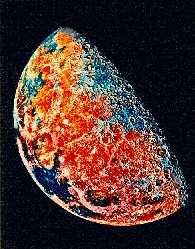This is an image of the Moon showing various minerals found on the surface.
Click on image for full size
NASA
The Moon's Remnant Magnetism
Although the Moon does not appear to have a magnetosphere surrounding it, it *is* a magnetic object in space. Scientists think that the magnetism of the Moon's surface is leftover from a time when the Moon's magnetic field was actively created by a dynamo within the lunar core, and that this remnant magnetism may gradually erode away.
Theories also suggest that the Moon's magnetism may come from collisions with other celestial bodies such as asteroids and comets, which might have
imparted to the Moon some magnetic properties.
Some regions of the Moon's surface are more magnetic than others. A
strip of the lunar crust called the Rima Sirsalis seems to be very strongly magnetic. Measurements of the uneveness of the magnetism and depth of the lunar crust such as those being made by the Lunar Prospector mission can supply information
about the magnetism of the surface, as well as the size and electrical conductivity of the
lunar core. Ultimately these measurements will help scientists
better understand the Moon's origins. For example,
if the core contains more magnetic elements (such as
iron) than the Earth, then the collision/ejection theory of lunar origin loses
some support.
You might also be interested in:
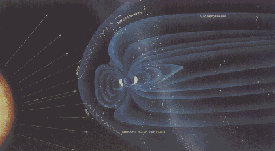
Unlike the Earth, which has a protective shield around it called the magnetosphere, the surface of the moon is not protected from the solar wind. This picture shows the magnetosphere surrounding the Earth,
...more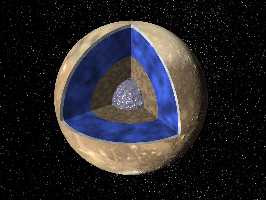
You may wonder how it is that scientists know what the inside of a planet is like. The interior of a moon or planet can be closely determined from spacecraft navigation data when a spacecraft passes by
...more
An element (also called a "chemical element") is a substance made up entirely of atoms having the same atomic number; that is, all of the atoms have the same number of protons. Hydrogen, helium, oxygen,
...more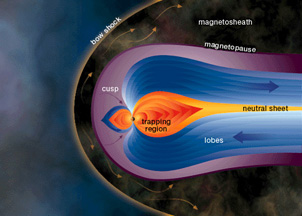
A magnetometer is an instrument for measuring magnetic fields. Many spacecraft carry magnetometers to measure the magnetic fields around planets. When a spacecraft makes those measurements, what do the
...more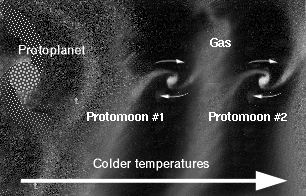
The co-formation theory explains the origin of the moon as an object which formed out of the primitive solar nebula at the same time and roughly the same place as the Earth. As shown in this picture, while
...more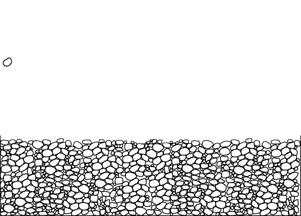
People used to think that moons such as the Earth's moon or the moons of Jupiter had no atmosphere whatsoever. Now, however, measurements have shown that most of these moons are surrounded by a *very*
...more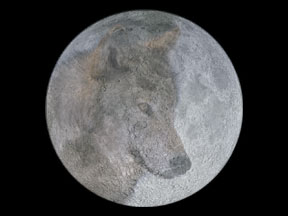
Sometimes, in the fall, you may hear people call a Full Moon the "Harvest Moon". That's because farmers can stay in their fields late, after sunset, harvesting their crops by the bright light of a Full
...more


